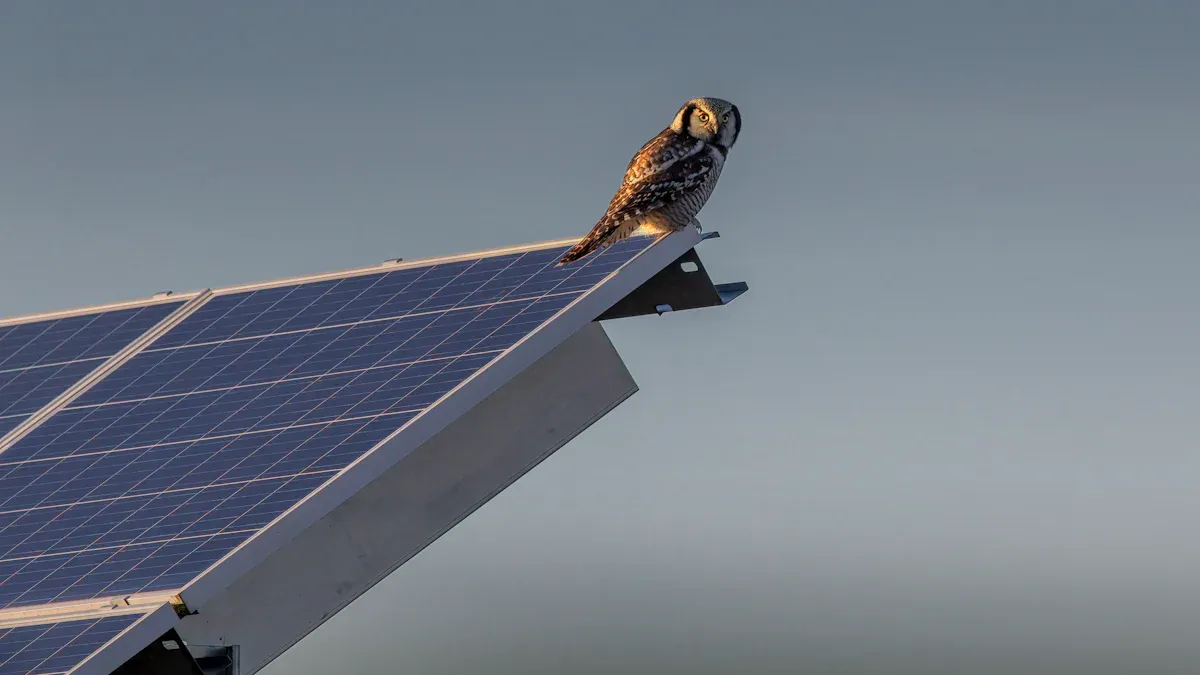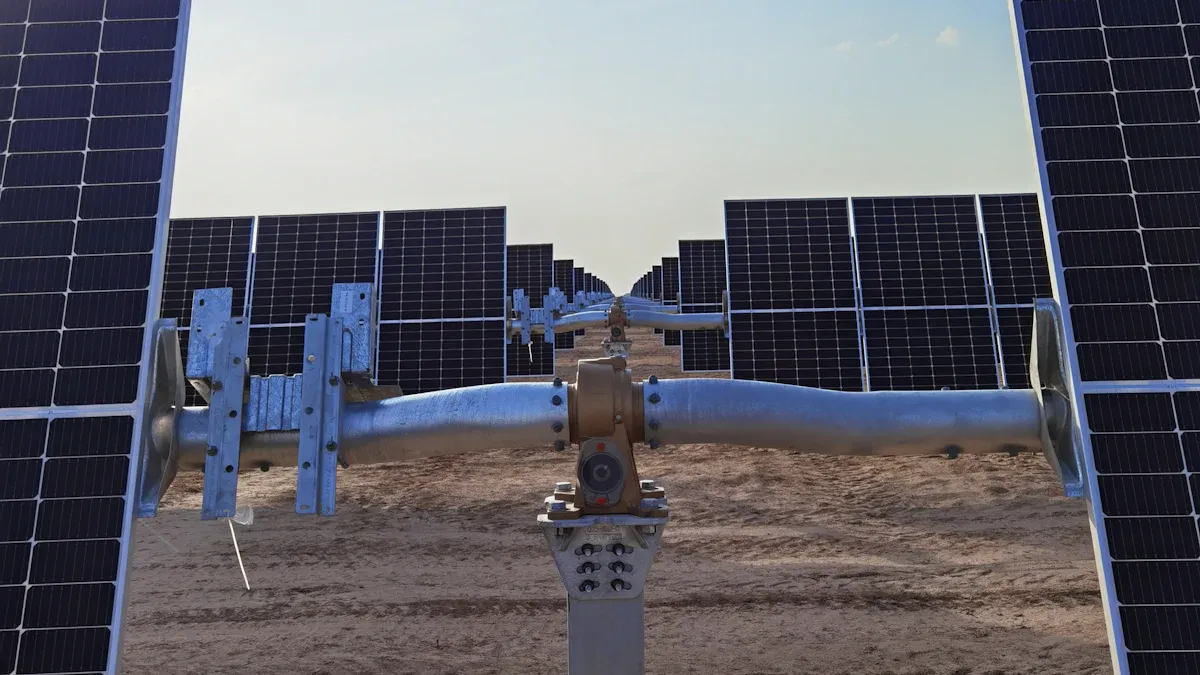Views: 0 Author: Site Editor Publish Time: 2025-06-19 Origin: Site








You benefit from wildlife tracker solar cell technology in three key ways:
You get longer device lifespan and continuous data, even in tough environments.
You minimize stress on animals because the trackers stay lightweight and small, often under 5% of an animal’s body weight.
You support eco-friendly research, reducing battery waste and enabling large-scale studies. For example, researchers collected over 177,000 data points from 312 solar-powered trackers used on 30 species across 12 countries. This approach improves animal welfare and gives you better information for conservation decisions.
Solar-powered wildlife trackers last longer and provide continuous data without frequent battery changes, saving time and reducing animal disturbance.
Lightweight and small solar trackers minimize stress on animals, allowing safe tracking of even the smallest species without affecting their behavior.
Using solar energy for tracking supports eco-friendly research by cutting battery waste and lowering carbon emissions, helping protect the environment.
Advanced solar cell designs keep trackers powered in low light and harsh conditions, ensuring reliable data collection in remote areas.
Choosing solar tracker technology makes wildlife research more responsible, sustainable, and effective for conservation efforts.
You want your wildlife tracker to work for months or even years without stopping. Wildlife tracker solar cell technology makes this possible by giving your device a steady source of energy. Here’s how it works:
Solar panels collect sunlight and turn it into electricity.
A charge controller manages how much power goes into the battery. It stops the battery from getting too full or too empty, which keeps it healthy.
The battery stores energy so your tracker keeps working even when the sun is not shining.
Good system design matches the size of the solar panel and battery to the animal’s environment and activity.
Tip: Using a battery with the solar panel helps keep the power steady. This is important for sensitive tracking devices that need a constant voltage.
You can see how each part works together in the table below:
Component/Process | Description |
|---|---|
Solar Panels | Turn sunlight into electricity using photovoltaic cells. |
Charge Controller | Controls charging, prevents overcharging and deep discharge. |
Lithium-Ion Battery | Stores energy; managed by a battery system to avoid overheating or damage. |
System Design | Ensures the right size and protection for continuous power. |
You save time and money when you do not have to replace batteries often. Wildlife tracker solar cell devices can run for five to ten years without a battery change. This means you do not need to disturb animals as much, which is better for their health.
Solar-powered trackers like TRACK Solar can work for over five years with no battery replacement.
SmartOne Solar trackers last up to ten years and do not need routine battery changes.
Solar energy harvesting keeps the battery charged, even at low sunlight levels.
You lower maintenance costs and reduce battery waste, which helps the environment.
Note: With fewer battery changes, you spend less time in the field and more time focusing on your research.

You want a tracker that does not slow down or bother the animal. Micro solar cells make this possible. These tiny cells keep the device light and small, so you can track even the smallest birds or mammals. For example, the Nomad tracker weighs only 4 grams. This weight is less than 3% of a small animal’s body weight. You can use it on species that could not carry heavier devices before. The tracker uses a 100mAh rechargeable battery, which stays charged with help from efficient solar energy harvesting. You do not need a big battery, so the device stays light and easy to carry.
Recent advances in micro solar cell technology give you durable and compact designs. These new cells work well even when the animal moves through thick brush or when feathers or fur cover part of the panel. You get steady power without making the device bulky.
Tip: Choose a wildlife tracker solar cell with a small, efficient panel. This helps you collect data without adding extra weight.
You care about animal welfare. Lighter and smaller trackers help you protect the animals you study. Researchers have found that small solar cells reduce the impact on animals, especially on tiny birds like migratory shorebirds. Experts recommend using the lightest device possible to avoid stress or harm. The ICARUS program showed that small, solar-powered GPS trackers can collect accurate data while staying gentle on the animal.
Smaller trackers lower the risk of changing how an animal moves or behaves.
Devices should weigh less than 3-5% of the animal’s body weight.
Good attachment methods and light materials help keep animals safe.
You can also check for any changes in animal behavior by looking at GPS data. Scientists use sensors to see if the animal flies, walks, or rests as usual. If the tracker is light enough, you will see normal patterns, which means the device does not disturb the animal. Advances in microelectronics and battery technology now let you track even the smallest animals with little risk.
Benefit | How It Helps You and Wildlife |
|---|---|
Small device size | Fits more species, even tiny birds |
Minimal weight | Reduces stress and keeps animals healthy |
Smart design | Maintains power even if partly covered |

You help the planet when you choose solar-powered trackers. These devices use the sun’s energy, so you do not need to rely on fossil fuels or throw away batteries. Here are some ways solar energy makes your tracking more eco-friendly:
Solar-powered trackers use renewable energy, which means you do not create pollution or toxic gases.
You lower your carbon footprint because you do not need to replace batteries as often.
Solar panels on trackers work quietly and do not disturb animals or their habitats.
Modern solar cells have become more efficient, so you get more power from a smaller panel.
Did you know? Solar-powered asset tracking reduces waste and emissions by using the sun instead of batteries or fuel. This helps you protect the environment while collecting important data.
You want to track animals for a long time without harming the environment. Solar-powered trackers make this possible. They last longer, need less maintenance, and create less waste. Here are some key benefits:
You reduce battery waste because you do not need to change batteries often.
Solar-powered trackers run for years, so you use fewer resources and create less trash.
You can track animals in remote places without worrying about power or frequent visits.
Metric | What It Means for You and Wildlife |
|---|---|
Carbon Emissions | You cut greenhouse gases by using solar power |
Energy Improvements | You get steady, renewable energy for your devices |
Waste Diversion | You avoid battery waste and protect ecosystems |
Water Reduction | You help save water by using clean energy |
Solar monitoring systems also give you real-time data. You can spot problems early and keep your trackers working well. This means you support conservation with less impact on nature. Wildlife tracker solar cell technology now costs less and is easier to use, so more people can join in protecting wildlife.
You gain three big advantages with wildlife tracker solar cell technology: longer device life, lighter trackers, and eco-friendly monitoring. These benefits help you collect better data and protect animals. Solar energy now supplies a large part of new renewable power worldwide. You help fight climate change and support wildlife conservation when you use these trackers.
Early research on animal behavior helps you avoid negative impacts from solar power.
Solar energy reduces fossil fuel use and helps local wildlife populations.
Choose wildlife tracker solar cell solutions to make your research more responsible and sustainable.
Most solar-powered trackers work for five to ten years. You do not need to replace batteries often. This long lifespan helps you collect more data and reduces stress on animals.
Yes! You can use lightweight solar trackers on birds, bats, and small mammals. New micro solar cells keep the device light and safe for even the tiniest species.
Trackers store extra energy in a battery. You still get data during cloudy days or at night. The system uses smart charging to keep working in different weather.
Most solar wildlife trackers have waterproof designs. You can use them in rain, wetlands, or even on aquatic animals. Always check the product’s waterproof rating before use.
No. Solar trackers use renewable energy and create less battery waste. You help protect wildlife and the planet by choosing solar-powered devices.
